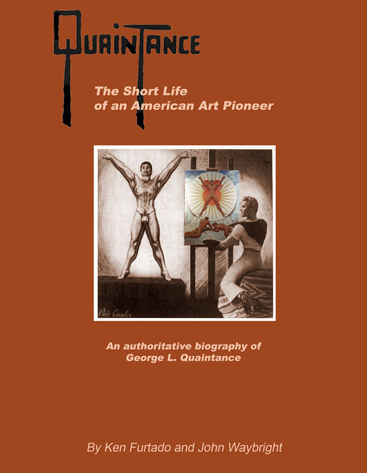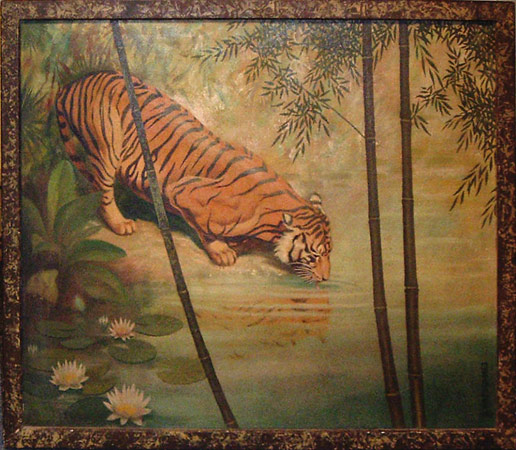 In 2005, an unusual painting appeared on eBay that surprised everyone who was familiar with the work of George Quaintance. It was a tiger, crouching to drink out of a pond bedecked with water lilies. The painting was signed at the lower right, using the squared letters and vertical orientation of Quaintance's earlier canvases, and dated 1940.
In 2005, an unusual painting appeared on eBay that surprised everyone who was familiar with the work of George Quaintance. It was a tiger, crouching to drink out of a pond bedecked with water lilies. The painting was signed at the lower right, using the squared letters and vertical orientation of Quaintance's earlier canvases, and dated 1940.
A less formal signature appeared on the back of the stretcher, also dated, and with the single word "Tiger." The requested opening bid was $1500, but there were no offers. The seller, who claimed to have had the painting hanging in his home for over 20 years, lowered the price several times, and the painting eventually sold for $800.
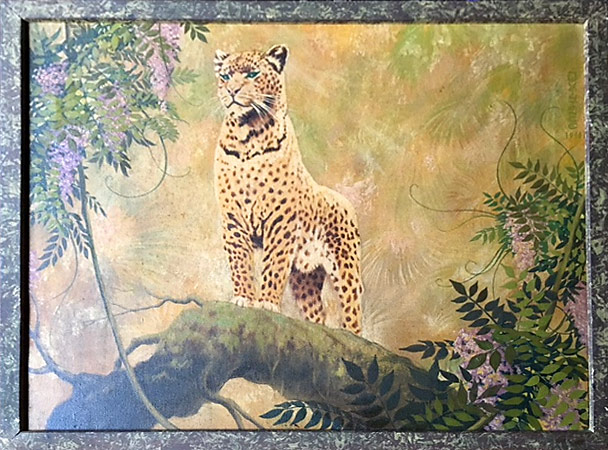 Serious Quaintance fans knew that the tiger had a companion: a leopard. A photo of the leopard had appeared in an ad for a leopard-print dressing gown in the August, 1945 issue of Beautify Your Figure. Ad copy read in part, "The leopard painting in the background, which repeats and emphasizes the beauty and feline coloring of the gown, is by George Quaintance." Quaintance was the art director for that publication.
Serious Quaintance fans knew that the tiger had a companion: a leopard. A photo of the leopard had appeared in an ad for a leopard-print dressing gown in the August, 1945 issue of Beautify Your Figure. Ad copy read in part, "The leopard painting in the background, which repeats and emphasizes the beauty and feline coloring of the gown, is by George Quaintance." Quaintance was the art director for that publication.
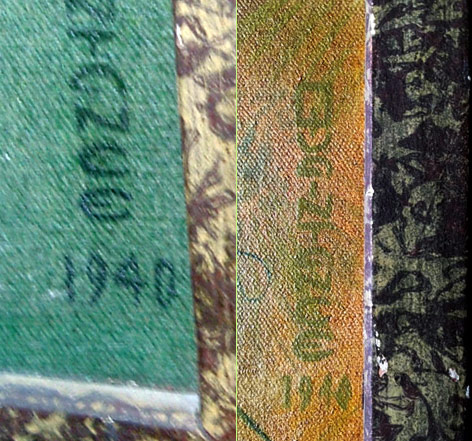 The leopard painting's whereabouts remained a mystery until last week, when an email arrived, saying "I came across your blog while doing some research on a painting that belongs to a family member. It's clearly a George Quaintance painting, dated 1940, and it came from the Luray, Virginia area." The email also noted that the writer was aware of the tiger painting, that both paintings were the same size (24x32 inches) and that both had elaborate painted frames. The writer did not respond to requests for more details about the painting.
The leopard painting's whereabouts remained a mystery until last week, when an email arrived, saying "I came across your blog while doing some research on a painting that belongs to a family member. It's clearly a George Quaintance painting, dated 1940, and it came from the Luray, Virginia area." The email also noted that the writer was aware of the tiger painting, that both paintings were the same size (24x32 inches) and that both had elaborate painted frames. The writer did not respond to requests for more details about the painting.
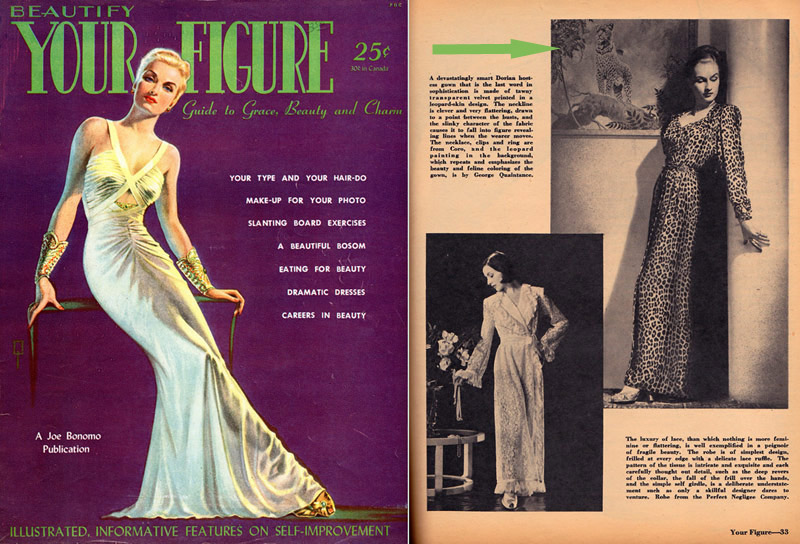 Here are both paintings, shown together for perhaps the first time since George painted them. The signatures are shown separately, with Tiger on the left and Leopard on the right. Also shown are the cover of the magazine in which the leopard's photo appeared and the ad, which was on page 33. The green arrow indicates the leopard painting hanging on the wall behind the model. (Please note that any image on this blog can be enlarged by clicking it.)
Here are both paintings, shown together for perhaps the first time since George painted them. The signatures are shown separately, with Tiger on the left and Leopard on the right. Also shown are the cover of the magazine in which the leopard's photo appeared and the ad, which was on page 33. The green arrow indicates the leopard painting hanging on the wall behind the model. (Please note that any image on this blog can be enlarged by clicking it.)

